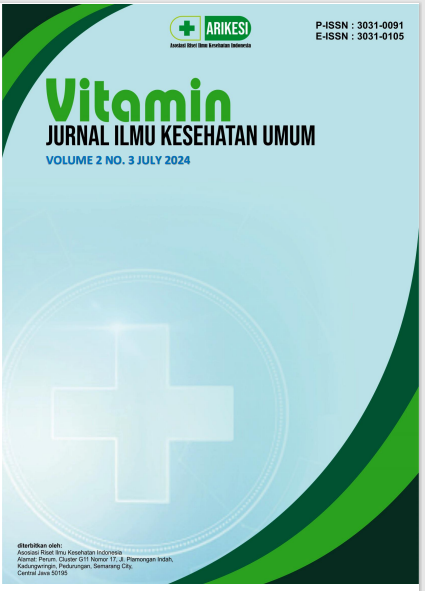Penatalaksanaan Fisoterapi pada Kasus Eating Disorderdi Klinik Asya Center Jombang : Studi Kasus
DOI:
https://doi.org/10.61132/vitamin.v3i1.949Keywords:
Eating Disorder, Intervention, AppetiteAbstract
Introduction: ED (Eating Disorders) is one of the most difficult mental disorders to treat and treat, and the cost is even higher than schizophrenia. Secondary somatic complications due to malnutrition, severe weight loss and low levels of micronutrients. Objective: To determine the effectiveness of a combination of interventions such as Expression Head Massage, Myofacial Release, Neurosenso Komplit, General Massage, Patterning, Play Therapy, Brain Gym, Oral Reflex Stimulation. Method: A single-subject study was conducted on a 22-month-old child with ED. Results: The results of the sensory examination evaluation showed an increase in sensory in the child. Conclusion: A 22-month-old child was diagnosed with Eating Disorder, initially given physiotherapy, the child did not want to eat rice at all, only wanted to drink milk and sometimes the child liked to hit and bite, but after doing routine physiotherapy and home programs, now the child is willing to feed 15 mouthfuls of rice and focus on the child has also begun to exist and the child's balance is increasing.
Downloads
References
Bakland, M. (2020). Patients' and therapists’ experiences with a new treatment for eating disorders, combining physical exercise and dietary therapy: An interview study.
Bobrová, M. M., & Králová, L. Physiotherapy as a part of complex treatment of Anorexia Nervosa.
Lubis, G. (2011). Masalah makan pada anak. Majalah Kedokteran Andalas.
Martini, M. G., Barona-Martinez, M., & Micali, N. (2020). Eating disorders, mothers, and their children: A systematic review of the literature. Archives of Women's Mental Health, 23(4), 449-467.
Minano-Garrido, E. J., Catalan-Matamoros, D., & Gómez-Conesa, A. (2022). Physical therapy interventions in patients with Anorexia Nervosa: A systematic review. International Journal of Environmental Research and Public Health, 19(21), 13921. https://doi.org/10.3390/ijerph192113921
Mukarromah, T. T. (2021). Modifikasi perilaku pada anak usia 0-8 tahun dengan gangguan perilaku makan (Pica Disorder) karena kelalaian orang tua: Studi literatur. Jurnal Ilmiah PTK PNF, 16(2), 96–108.
Ortiz-Campoy, S., Lirio-Romero, C., Romay-Barrero, H., Álvarez, D. M. C., López-Muñoz, P., & Palomo-Carrión, R. (2021). The role of physiotherapy in pediatric palliative care: A systematic review. Children, 8(11), 1043.
Qalbya, Y. A., Saleky, Y. W., Isdiany, N., & Mulyo, G. P. (2022). Hubungan tingkat stres dan eating disorder dengan status gizi. Jurnal Gizi dan Dietetik, 1(1), 1-10.
Sagita, D. I., Salimo, H., & Andayani, T. R. (2023). Pengembangan video edukasi feeding practice anak cerebral palsy.
Stavropoulou, M., Alexandra, H. P., Apostolou, T., Iakovidis, P., Maria, K. G., & Manous, T. (2020). Parents’ opinion on pediatric physiotherapy and the physical therapy. Physiotherapy Research and Reports, 3, 1-3.
Zielinski-Gussen, I. M., Dahmen, B., & Herpertz-Dahlmann, B. (2022). Home treatment for eating disorders. In Eating Disorders: An International Comprehensive View (pp. 1-12). Cham: Springer International Publishing.
Downloads
Published
How to Cite
Issue
Section
License
Copyright (c) 2024 Vitamin : Jurnal ilmu Kesehatan Umum

This work is licensed under a Creative Commons Attribution-ShareAlike 4.0 International License.





